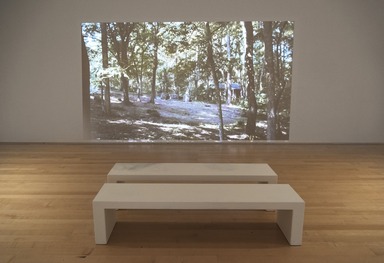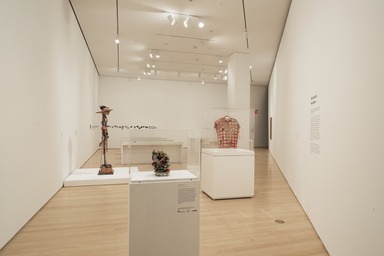

Beverly Buchanan - Ruins and Rituals, October 21, 2016 through March 05, 2017 (Image: DIG_E_2016_Beverly_Buchanan_01_PS11.jpg Brooklyn Museum photograph, 2016)
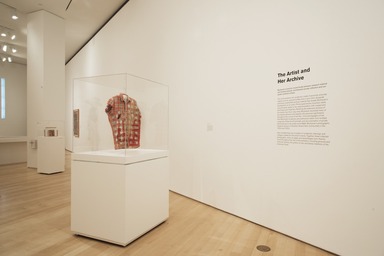
Beverly Buchanan - Ruins and Rituals, October 21, 2016 through March 05, 2017 (Image: DIG_E_2016_Beverly_Buchanan_02_PS11.jpg Brooklyn Museum photograph, 2016)

Beverly Buchanan - Ruins and Rituals, October 21, 2016 through March 05, 2017 (Image: DIG_E_2016_Beverly_Buchanan_03_PS11.jpg Brooklyn Museum photograph, 2016)
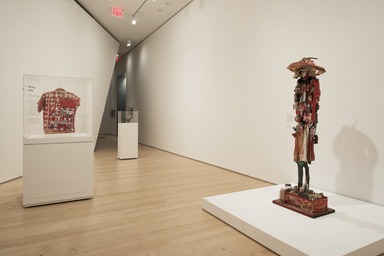
Beverly Buchanan - Ruins and Rituals, October 21, 2016 through March 05, 2017 (Image: DIG_E_2016_Beverly_Buchanan_04_PS11.jpg Brooklyn Museum photograph, 2016)

Beverly Buchanan - Ruins and Rituals, October 21, 2016 through March 05, 2017 (Image: DIG_E_2016_Beverly_Buchanan_05_PS11.jpg Brooklyn Museum photograph, 2016)

Beverly Buchanan - Ruins and Rituals, October 21, 2016 through March 05, 2017 (Image: DIG_E_2016_Beverly_Buchanan_06_PS11.jpg Brooklyn Museum photograph, 2016)

Beverly Buchanan - Ruins and Rituals, October 21, 2016 through March 05, 2017 (Image: DIG_E_2016_Beverly_Buchanan_07_PS11.jpg Brooklyn Museum photograph, 2016)
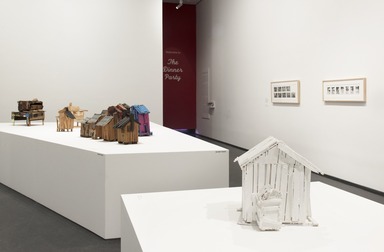
Beverly Buchanan - Ruins and Rituals, October 21, 2016 through March 05, 2017 (Image: DIG_E_2016_Beverly_Buchanan_08_PS11.jpg Brooklyn Museum photograph, 2016)
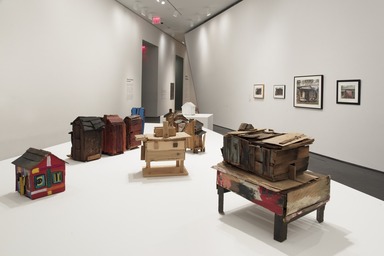
Beverly Buchanan - Ruins and Rituals, October 21, 2016 through March 05, 2017 (Image: DIG_E_2016_Beverly_Buchanan_09_PS11.jpg Brooklyn Museum photograph, 2016)

Beverly Buchanan - Ruins and Rituals, October 21, 2016 through March 05, 2017 (Image: DIG_E_2016_Beverly_Buchanan_10_PS11.jpg Brooklyn Museum photograph, 2016)
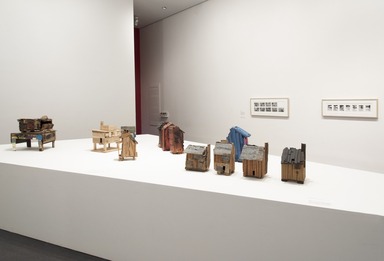
Beverly Buchanan - Ruins and Rituals, October 21, 2016 through March 05, 2017 (Image: DIG_E_2016_Beverly_Buchanan_11_PS11.jpg Brooklyn Museum photograph, 2016)
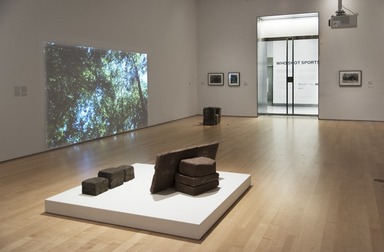
Beverly Buchanan - Ruins and Rituals, October 21, 2016 through March 05, 2017 (Image: DIG_E_2016_Beverly_Buchanan_12_PS11.jpg Brooklyn Museum photograph, 2016)
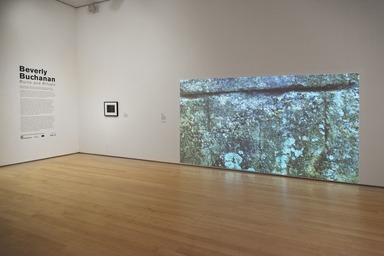
Beverly Buchanan - Ruins and Rituals, October 21, 2016 through March 05, 2017 (Image: DIG_E_2016_Beverly_Buchanan_13_PS11.jpg Brooklyn Museum photograph, 2016)
Beverly Buchanan - Ruins and Rituals
-
Beverly Buchanan—Ruins and Rituals
Beverly Buchanan (American, 1940–2015) explored the relationship between place and personal, historical, and geographical memory in her art.
Engaging with movements such as Post-Minimalism, Land Art, and feminism, Buchanan created her own mode of abstraction by investing it with political and social content. Focusing on the formal structures of walls, houses, memorials, and burial sites, her works question the methods and effects of history, asking who is commemorated and how.
Born in Fuquay-Varina, North Carolina, Buchanan spent much of her childhood on the campus of South Carolina State University, where her great-uncle Walter Buchanan was dean of the School of Agriculture. Devoting her formal education to science and medicine, Buchanan received graduate degrees in parasitology and public health from Columbia University in 1969. While working as a public health educator in East Orange, New Jersey, she enrolled in classes at the Art Students League with the painter Norman Lewis, who, along with the artist Romare Bearden, became her mentor. Soon after, Buchanan turned her attention entirely to art-making with a series of gallery and museum exhibitions. In the late 1970s, after a decade in New York and New Jersey, she moved to Macon, Georgia.
Beverly Buchanan—Ruins and Rituals surveys more than three decades of the artist’s work and spans the Sackler Center’s three galleries. The first room features the artist’s cast-concrete sculptures alongside a video installation documenting her site-specific earthworks for the first time. The next gallery showcases a range of archival material, works on paper, and three-dimensional objects that all grew out of the artist’s early interest in the materials, colors, and underlying histories of specific places. The third room of the exhibition is devoted to Buchanan’s best-known works, her shack sculptures. Developed over decades of living and working in the American Southeast, these later works are studies in Southern vernacular architecture and portraiture.
Beverly Buchanan—Ruins and Rituals is part of A Year of Yes: Reimagining Feminism at the Brooklyn Museum, a yearlong series of ten exhibitions celebrating the 10th anniversary of the Elizabeth A. Sackler Center for Feminist Art. Leadership support is provided by Elizabeth A. Sackler, an anonymous donor, the Stavros Niarchos Foundation, the Calvin Klein Family Foundation, and Mary Jo and Ted Shen. Generous support is also provided by the Taylor Foundation, the Antonia and Vladimer Kulaev Cultural Heritage Fund, Beth Dozoretz, and The Cowles Charitable Trust.
Beverly Buchanan—Ruins and Rituals is organized by guest curators Jennifer Burris and Park McArthur, and coordinated by Catherine Morris, Sackler Family Curator for the Elizabeth A. Sackler Center for Feminist Art, and Cora Michael, Associate Curator of Exhibitions, Brooklyn Museum.
Generous support for this exhibition is provided by the Contemporary Art Acquisitions Committee.
The curators are grateful to Andy Campbell, Cameron Rowland, Arden Scott, and Lowery Stokes Sims for their valuable advice, and extend special thanks to Jane Bridges and Prudence Lopp.
-
Frustula, Stones, and Earthworks
During the late 1970s, Buchanan developed an approach to sculpture that placed the concise forms of Post-Minimalist art in dialogue with the realities of urban decay and social displacement.
She recalled, “I began casting small cement pieces using old bricks and milk cartons as forms in a fourth floor walk-up in East Orange, New Jersey. From nine to five, I was that city’s health educator. . . . So I had to do this late at night.” These sculptures, called Frustula, a word meaning “fragments,” emerged from Buchanan’s observation of the remnants of destroyed buildings in New York.
After moving to Georgia, Buchanan began to integrate this studio practice of casting concrete with her ritual of placing stones at a site to memorialize black and indigenous life there. She recalled encountering a business that had recently changed its racist hiring practices: “I wanted something there to commemorate that. . . . So I took the stones I had in my car and I made a pile there, but I didn’t put a sign.”
From 1979 to 1986, the artist created seven site-specific outdoor sculptures across the American Southeast. These earthworks address how histories are written or ignored, as well as the violence of state-sanctioned and vigilante racism. -
The Artist and Her Archive
Buchanan’s practice moved fluidly between research material and finished artwork, and between private reflection and outspoken political critique.
This room presents her sculptures, made of personal, everyday objects such as used pill bottles and a worn shirt, alongside previously unexhibited archival material that reveals Buchanan’s development as an artist. Photocopied books, business cards, and postcards speak to her experimentation with inexpensive techniques and materials. Relishing the extensive services of the twenty-four hour copy shop, Buchanan reworked many of her earliest artworks and objects with personal significance throughout the course of her life—from photographs of her Post-Minimalist sculptures and earthworks taken from multiple viewpoints, Polaroid self-portraits, and documentation of private performances to her great-uncle Walter Buchanan’s photographic research archive of Southern tenant-farm communities in the 1920s and 1930s.
Also included here are a number of sculptures, drawings, and collages created for the artist’s friends. Together, these collected photographs, works on paper, and assemblages echo themes found throughout the rest of the exhibition, including personal and historical memory, the politics of site, and literary traditions of the American South.
-
Shacks, Photographs, and Legends
Throughout the decades that Buchanan lived and worked in the American Southeast, she gathered what she termed “groundings”: histories, folklore, transcribed conversations, photographs of unmarked ruins, and models of vernacular architecture.
These diverse references—which speak to African heritage as much as to life under Jim Crow and during the Civil Rights Movement—became the source material for extended series of works in sculpture, photography, and text. While evidently influenced by traditions of Southern literature and storytelling, Buchanan’s groundings were also informed by her work in public health. “One of the things that parasitology allowed me to do was to investigate. . . . That meant questions and answers and talking to people. . . . What I’m doing is taking parts of different family experiences . . . and putting them together into one thing.”
Buchanan’s shacks combine folk aesthetics with a clinician’s precise examination of culture. Often categorized by architectural style (such as shotgun houses, saddlebags, dogtrots, and elevated low country homes), the sculptures are frequently paired with what the artist called “legends,” patchwork narratives about the structures and people commemorated. As Buchanan explained, “I think that artists in the South must at some point confront the work of folk artists . . . [in terms of] being of and from the same place with the same influences, food, dirt, sky, reclaimed land, development, violence, guns, ghosts.”
-
July 1, 2016
Exhibition Kicks off the 10th Anniversary of the Elizabeth A. Sackler Center for Feminist Art
Through incisive considerations of site, history, biography, and portraiture, Beverly Buchanan (1940–2015) produced landmark bodies of work, including cast concrete and mixed-media sculptures, drawings and books, and evocative paintings and photographs. The Brooklyn Museum will present the most comprehensive exhibition of Buchanan’s work to date through approximately 200 objects, including sculpture, painting, photography, drawing, notebooks of the artist’s writings, and documentation of private performances. The exhibition will also debut a video installation documenting her existing site-specific earthworks in locations across the American Southeast. Emphasizing how Buchanan’s work resisted easy categorization, this exhibition investigates her dialogue not only with a range of styles, materials, movements, and literary genres, but also with gender, race, class, and identity. Beverly Buchanan—Ruins and Rituals is the inaugural exhibition of a yearlong project celebrating a decade of feminist thinking at the Brooklyn Museum with ten exhibitions, symposia, and a vast array of public programs.
“Buchanan is a game changer—for land art, for conceptual art, and for feminist art” says Catherine Morris, Brooklyn Museum Sackler Family Curator for the Elizabeth A. Sackler Center for Feminist Art. “Folding these formal and political practices into discussions about her experience as a black woman living and working much of her life in the Deep South offers a remarkably enriched reading of some of the most important art movements of the late twentieth century.”
Buchanan’s practice is informed by the histories of the locations where she lived and worked, including New York, Georgia, and Florida. The artist explored themes of memory and historical injustice, monument and ruin, as well as the forms and histories of southern vernacular architecture and site markers and meeting places. Referring to the importance of place for her work, Buchanan wrote in 1998, “I think that artists in the South must at some point confront the work of folk artists not so much in terms of the work but of the persons Page : 2 and the work as being of and from the same place with the same influences, food, dirt, sky, reclaimed land, development, violence, guns, ghosts, and so forth.”
Exploring several bodies of Buchanan’s oeuvre, the exhibition begins with her early abstract City Ruins and Black Walls paintings influenced by Norman Lewis and Romare Bearden, her former mentors. Site-specific work is represented in dialogue with the architectural and archaeological sculptures that she called Frustula, from a term meaning fragments, or broken-off pieces. Buchanan’s intimate photographic portraits will be shown alongside key examples of her best-known works, including small sculptures of southern vernacular dwellings or shacks.
“I’ve read that my work is about nostalgia. It is not,” Buchanan stated. “It is about drawing with my camera and documenting old, former, slave cabins, turned tenement houses instead of drawing with oil pastels.” This engagement with social and historical memory informed both her public health career and her artwork across a range of media. By evoking unmarked and marginalized histories, Buchanan’s work questions the complex relationship between commemoration and representation.
About Beverly Buchanan
Born in 1940 in North Carolina, Buchanan was raised by her great-aunt and -uncle, Marion and Walter Buchanan, in South Carolina. Growing up on the campus of South Carolina State University, where her great-uncle was Dean of the School of Agriculture, Buchanan spent much of her time in the school and on long drives accompanying Walter during his work with tenant farmers. Receiving master’s degrees in parasitology and public health from Columbia University, Buchanan worked as a medical technologist for the Veterans Administration in the Bronx and then as a public health educator for the East Orange Health Department in New Jersey. During the 1970s, Buchanan attended art classes at the Art Students League, where she studied with Norman Lewis, and was introduced to Romare Bearden and Ernest Crichlow. Buchanan was the recipient of a Guggenheim Fellowship, an Anonymous Was a Woman Award, and two NEA Fellowships, among others.
About the Elizabeth A. Sackler Center for Feminist Art
The Elizabeth A. Sackler Center for Feminist Art is a nexus for feminist art, theory, and activism. It is the permanent home of The Dinner Party by Judy Chicago, its Feminist Art and Herstory galleries display critically acclaimed exhibitions, and its Forum is a venue for lectures and a platform of advocacy for women’s issues.
Tour venues and dates for Beverly Buchanan are to be announced.
Beverly Buchanan—Ruins and Rituals is organized by guest curators Jennifer Burris and Park McArthur, and coordinated by Catherine J. Morris, Sackler Family Curator for the Elizabeth A. Sackler Center for Feminist Art, and Cora Michael, Associate Curator of Exhibitions, Brooklyn Museum.
Generous support for this exhibition is provided by the Contemporary Art Acquisitions Committee.
Press Area of Website
View Original

